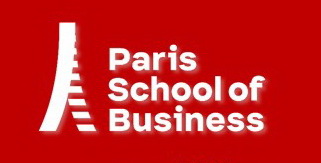Dual-use strategies focus on taking advantage of the exploitation of competences, technologies, products, processes, suited to the twin
fulfillment of specifications issued by civilian and Defense-related markets. The important growth of activities on civilian commercial markets on the
one hand and the variety of technological trajectories on Defense and Security-related markets on the other hand, explain why dual-use technologies and
innovation have become a key issue in strategy making.
The project focuses on the industry working for the French Defense. We investigate several dimensions: strategy,
the management of innovation, business models. The report compares “historical” players in the industry, and new entrants. Our approach allows for the
investigation of common features, and divergences, in relation with the nature of activities. The report points out how the reference to dual-use technologies
and innovation situates in the products/markets diversification and in the specialization process.
New managerial approaches of dual-use technologies and innovation are now present in the industry. The focus on dual-use developments
requires new perspectives on the collective and iterative approach to innovation. Taking advantage of dual-use developments requires a perfect understanding
of all connections in the ecosystem, and new modes of interactions between the industry and the end-users. Inside the industry, the reference to dual-use
technologies implies the introduction of new managerial modes for the innovation process, and of new transverse functions suited to taking maximum advantage of
synergies between Defense, Security and civilian markets. This reference also translates into new strategies for ‘open innovation’, making the most out of internal
skills and knowledge made available from other sectors (e.g. videogames).
The reference to dual-use technologies and products in business models introduces an interesting perspective when the industry actually elaborates
its strategy both on civilian, and Defense and Security markets. We investigate the relationship between costs, profit, revenues, and (core) competences.
We point out the specificities of each dimension for projects primarily targeting civilian, or Defense and Security markets.
In this project, the analysis of dual-use strategies elaborates on seven in-depth case studies pointing out constraints and opportunities. For
each case study, the report delivered to the French MoD goes into the details of the articulation between the market strategy, the business model, and the managerial
modes introduced for the innovation process.
Six case studies have developed with THALES business units:
- cockpits and digital screens for military aircraft;
- secured GNSS receptors or secured GNSS services;
- ground military radars and ATM radars;
- ground command and control networks for civilian and military air traffic management (SWIM vs. SCCOA / ACCS LOC1);
- cyber-security; and
- the A400M ‘Grizzly’ flight management system.
The 7th case study investigated the development of the internal start-up installed by DCNS on renewable marine energies for its strategic diversification.
All seven case studies have allowed to pointing out key success factors for the implementation of strategies focusing on dual-use technologies and innovation.







